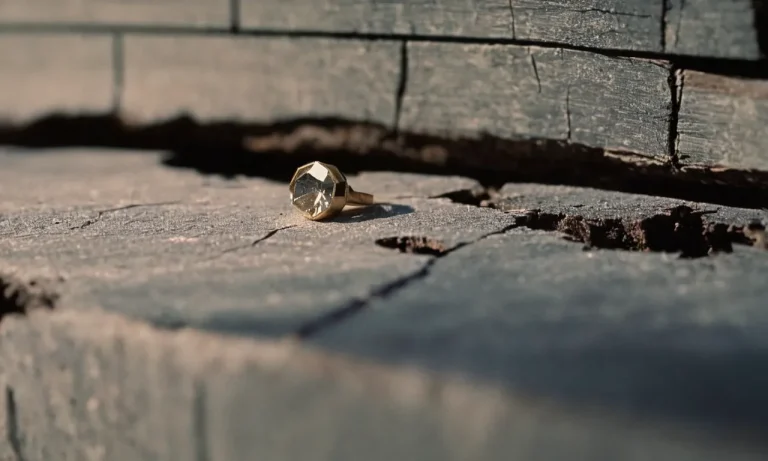The practice of lotus birth, while still relatively rare in Western cultures, carries deep spiritual meaning for those who choose this birthing method. By leaving the umbilical cord and placenta attached after birth rather than cutting the cord, lotus birthing allows for an extended period of connection between baby and placenta.
This article will explore the origins, purpose, and spiritual symbolism behind this unique birthing choice.
If you’re short on time, here’s a quick answer: Lotus birth involves leaving the umbilical cord and placenta attached to the newborn rather than cutting the cord soon after delivery. Many see spiritual meaning in allowing this extended physical connection, letting the baby absorb the full energy from the placenta over days or weeks after birth.
The History and Origins of Lotus Birth
Spiritual Roots in Some Traditional Cultures
The practice of leaving the umbilical cord attached after birth has spiritual roots in some traditional cultures around the world. In parts of China and other Asian countries, the placenta and umbilical cord were seen as a link to the higher self, and allowing them to detach naturally was believed to impart wisdom.
There is evidence that some Native American tribes and indigenous Australian groups also practiced a version of umbilical cord non-severance.
However, the phrase “lotus birth” itself is a modern invention. The image of the newborn still attached to their placenta is reminiscent of a lotus flower floating peacefully on water. So while spiritual beliefs about the sacredness of birth led some cultures to avoiding cutting the cord, the specific term “lotus birth” was coined in the 1970s.
Origins in the 1970s Natural Birthing Movement
In the 1970s, as the natural childbirth movement grew in the West, some expectant parents began seeking alternatives to routine medical interventions in the birth process. This included foregoing immediate cord clamping and cutting.
Midwife Clair Lotus Day popularized the term “lotus birth” in 1974 to describe keeping the cord and placenta attached until the cord naturally separates.
As home and water births became more common, women exploring natural childbirth latched onto lotus birth as a way to experience an intervention-free delivery. Interest gradually spread through quirky niches like homesteaders, off-grid communities, and back-to-the-land types.
Information continued circulating among those interested in gentle birth practices, breastfeeding, simple living lifestyles, attachment parenting, and reconnecting with nature.
Estimates suggest lotus births now account for just 1% of U.S. home births and under 0.1% of total births. So while the practice originated in the ’70s and remains on the fringe, some expectant parents today continue seeking this way of honoring the connection between mother and newborn through a complete non-severance birth.
Reasons can be spiritual, emotional, linking back to traditional cultures, anti-medicalization of birth, or simply following intuition.
Core Beliefs Behind Choosing Lotus Birth
Allowing a Natural Separation Process
Many families choose lotus birth because they believe it allows the baby and placenta to separate naturally on their own schedule (1). Typically, the umbilical cord dries up and detaches from the navel within 3-10 days after birth.
This gentle timing respects the infant’s sensitive and critical adjustment to life outside the womb.
Advocates argue that premature cord clamping denies babies full blood volume and may impact development or adjustment (2). Allowing a natural separation honors the baby’s physiological needs and sacred timing.
As midwife Gloria Lemay writes, “We need to look at both baby and placenta as living, breathing beings that require honor and respect.”
Honoring the Placenta as a Sacred Organ
Many cultures view the placenta as a baby’s spiritual twin or first friend. The placenta grows with the fetus for 9 months, providing nourishment, waste elimination, and protection (3). It is intimately bonded to support the baby’s growth.
Leaving the placenta attached validates its role until separation completes naturally. As midwife Jeannine Parvati Baker writes, “The placenta is the baby’s first teacher, exchanging nutrients and oxygen for love and knowledge and preparing it for its journey in the world.” Keeping it nearby honors this relationship.
Further, some believe the placenta retains connection to the child’s essence and spiritual identity even after delivery. Out of respect for this bond, families choose to handle or bury the placenta in special ways.
Symbolic Meanings Associated with Lotus Birth
The Lotus Flower as a Spiritual Symbol
The lotus flower holds deep spiritual meaning in many cultures and religions, representing qualities like purity, enlightenment, self-regeneration, and rebirth. In Buddhism, the lotus emerging unstained from the mud represents purification of the soul and the ability to transcend one’s surroundings.
The lotus has long symbolized spiritual awakening and the victory of the soul over earthly concerns, making it the perfect symbol for the spiritual significance of lotus birth.
Wholeness, Interconnectedness, and New Life
By not cutting the baby’s umbilical cord, the placenta still pulses with the beat of the mother’s heart up to an hour after delivery, transferring blood cells rich in stem cells and nutrients to the newborn.
This symbolic connection represents the wholeness and interconnectedness between parent and child. The placenta is the baby’s first environment and source of nourishment – their original food supply. Keeping this connection, as with lotus birth, is seen by some as providing
completion through honoring where the baby’s life began as they transition into the world.
Absorbing the Energy from the Placenta
Some cultures believe that the placenta has absorbed the energy and consciousness of the mother’s womb, and contains the baby’s own umbilical energy that guides their health and intuition. These beliefs hold that this important transitional time allows the baby to further absorb these energies, imbuing them through the spirit and providing a healthier start on life’s journey.
In parts of China, burying the placenta is thought to tie the child emotionally and spiritually to their place of birth over their entire lifetime.
The Process and Experience of Lotus Birth
Leaving the Cord and Placenta Attached After Birth
Lotus birth, also known as umbilical nonseverance, is the practice of leaving the umbilical cord and placenta attached to the newborn after birth until the cord naturally falls off on its own. Typically, the cord dries up and separates within 3-10 days after birth.
This allows the baby to continue receiving oxygen and nutrients from the placenta while transitioning to breathing air and feeding directly.
Many cultures practiced lotus birth historically and some still do today believing it is beneficial for the child’s spiritual journey. Parents choosing lotus birth today feel it honors the natural timing for when baby is spiritually ready to fully separate from placental life.
Parents report lotus birth helps them bond deeply with baby during the sensitive newborn period. The connected placenta and cord may also serve an energetic purpose we do not fully understand. Some feel it supports optimal transition of the lifeforce from placenta to baby.
Caring for the Placenta Over the Coming Days
After the lotus birth, parents place the placenta in a breathable container along with herbs, salt and essential oils. This supports dehydration and preservation while lessening odor. The placenta stays near the baby during this transition phase.
Parents change absorbent pads covering the placenta as needed to keep baby’s cord and surrounding areas clean. Special care prevents risk of newborn infection as the cord detaches from the navel. Parents report the placenta does not have much odor if properly cared for.
Lotus birth requires commitment in the days following childbirth. But most parents choose lotus birth feel the extra effort worthwhile to give baby the optimal start according to nature’s timing. Fathers can share responsibility of placental care too strengthening family bonding.
Final Separation When the Cord Naturally Drops Off
The umbilical cord stump detaches anywhere from 3-10 days after birth typically. Parents feel joy when noticing the first signs of cord loosening and prepare for final separation. The moment when the cord fully drops off can feel spiritual for parents as baby completes the transition.
According to lotus birth advocates, babies may lose less weight waiting for natural cord detachment since they receive ongoing nourishment from the placenta. Less jaundice may also occur keeping baby calmer. However, more research is still needed regarding the potential benefits.
Once the cord falls off, parents often save the dried placenta in a special keepsake container along with a small piece of the umbilical cord if desired. This retains the placenta’s spiritual meaning. Parents report feeling gratitude looking back on their lotus birth experience.
Potential Benefits vs. Controversies and Concerns
Possible Health Benefits for Baby
Proponents of lotus birth cite several potential health benefits for the newborn when the umbilical cord is left attached until it falls off naturally:
- Allowing the cord to detach naturally may promote closure of the umbilical wound and healing of the navel
- Keeping the placenta attached may help the baby transition more gradually in the days after birth
- The additional blood and stem cells from the placenta may give a boost to the baby’s immune system
However, research specifically on lotus birth is limited. More evidence is still needed to confirm if there are measurable medical advantages. Much of the claimed benefit is theoretical at this point.
Infection Risk Arguments and Rebuttals
The biggest concern medical experts raise is the risk of infection when the umbilical cord is left in open air instead of being promptly clamped. Bacteria could enter the cord stump or placenta and spread to the newborn.
Advocates argue that infection rates are still low if proper technique and hygiene are followed when caring for the attached placenta. However, there are still more documented cases of omphalitis infections with lotus births compared to early cord clamping.
Reports vary widely on actual numbers though.
| Documented omphalitis infection rates | Standard early clamping | Lotus birth cases |
| Developed countries | 0.5-1 per 1000 | Up to 20 per 1000 |
| Developing countries | 11 per 1000 | Data still limited |
The conflicting statistics leave room for debate around the actual risk levels involved with retained placentas after birth.
Cultural Stigma and Misconceptions
Outside of potential health concerns, lotus birth faces cultural stigma in Western countries where early cord clamping is standard practice. People perceive leaving the placenta attached as strange or unhygienic.
However, delayed cord clamping is gaining acceptance in mainstream medicine for its possible benefits. Lotus birth takes that idea further. As birth practices continue evolving, cultural attitudes may shift as well.
More research evidence could lend credibility to this alternative birthing method going forward too.
Conclusion
While still uncommon in many cultures, lotus birth offers a unique birthing experience for families seeking greater spiritual meaning and connection through childbirth. Leaving the cord and placenta attached honors ancient cultural traditions and allows the baby to fully absorb placental energy until ready for a natural separation.
Rather than rushing to cut the cord, lotus birth provides an opportunity to reflect on the wonder of new life and our interconnectedness with our children, even beyond the womb. For those called to this birthing path, the lotus flower serves as the perfect symbol of wholeness and the emergence of new life.






